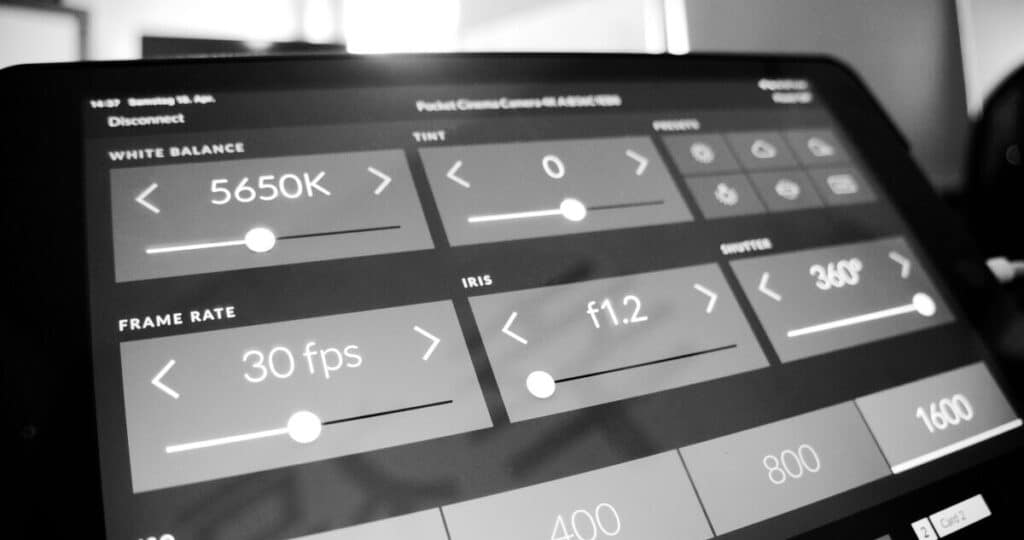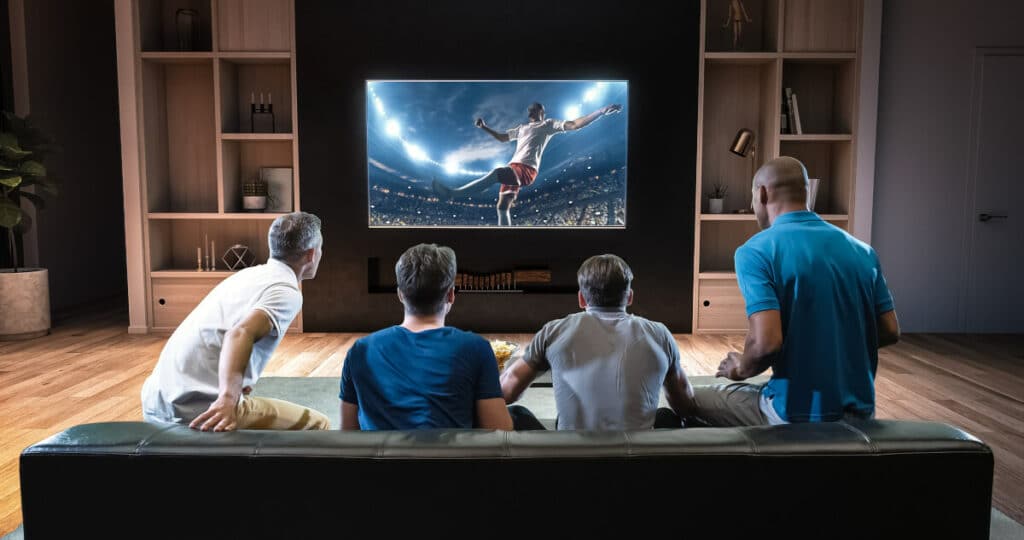the essentials in brief
A refresh rate of 60 Hz is sufficient for surfing the Internet or word processing. Get more information about the influence of the refresh rate here...
4K TVs should have a refresh rate of at least 60 Hz to ensure smooth display of content. Learn more about native refresh rates here...
The native refresh rate is an invariable characteristic of each display. However, you can try overclocking the actual refresh rate.
You may have wondered what the native refresh rate of your TV or Monitor means and why it matters. In this article, we're going to delve deeper into it, explaining what native refresh rate is and why it matters for image quality.
Contents
Native Refresh Rate - What is it?

"What is a native refresh rate?" asks many a TV newbie. The question is quite easy to answer. The native refresh rate – also known as refresh rate – refers to the number of frames a screen can display per second. she will in Hertz (Hz) and indicates how often the screen is refreshed. The higher the frequency, the smoother and more fluid the image appears on the Screen.
Now you should know what a native refresh rate actually is!
motion smoothing
Motion smoothing, also known as the "soap opera effect," is a technology commonly used in televisions with a high native refresh rate that can make movies and series look unnatural.
Impact of native refresh rate

The native refresh rate is important because it direct influence on the quality and fluidity of the image. A lower refresh rate may cause the image to appear choppy or laggy, while a higher refresh rate results in a smoother, more fluid image.
The native refresh rate is particularly important for fast movements, such as in video games or sports broadcasts. A higher frequency can help fast movements appear better and minimize stuttering.
Tip: If you mainly watch films and series, a refresh rate of 60 Hz to native 120 Hz TV is usually sufficient. However, if you often play video games or watch sports, a higher native refresh rate of at least 165 Hz can be beneficial.
Choosing the right refresh rate

If you choose to, one new TV or monitor before buying it is important that you consider the native refresh rate. A higher refresh rate is usually more expensive, but can affect the quality and fluidity of the screen Image impact.
It's also important to note that the screen's native refresh rate is just one factor among many. Other factors are those Resolution of the screen that quality of the used HDMI-Cable and the Performance your game console or computer.
It's also important to note that screen refresh rate isn't always the actual refresh rate you're seeing. Many TV and monitors offer "refresh rate upscalers" or "refresh rate simulators". These can Upscale image to a higher frequencyto create a smooth and fluid image. However, it's important to note that these features aren't always perfect and may result in a slight drop in quality.
Check your TV's settings to ensure that motion smoothing or similar technologies are disabled. These can cause the picture to look unnatural and Artifacts produce.
Note: The 50 Hz native refresh rate is a term from the world of TV and video technology. A native refresh rate of 50Hz means the device is capable of displaying 50 frames per second. The refresh rate of 50 Hz is widespread in Europe, but comparatively low.
Pros and cons of high refresh rate
When it comes to choosing the right TV, refresh rate is an important factor to consider. A higher refresh rate can lead to a smoother display of content and reduce motion blur, while a lower refresh rate can cause the image to "judder".
60 Hz vs. 100 Hz: What is the difference?
60Hz vs 100Hz – A comparison that is being drawn more and more frequently. The difference between 60 Hz and 100 Hz monitors is basically in the refresh rate. A higher native refresh rate means the device is capable of displaying more frames per second.
This can help Movements on the screen smoother and look more natural, especially in fast action scenes or sports broadcasts. The 60Hz native refresh rate is common in the US and some other countries, while the 100Hz native refresh rate is standard in Europe and some other parts of the world.
However, the difference between 60 Hz and 100 Hz is clear to the average viewer not always easy to spot, and there are other factors such as response time or image quality that come into play.
Additional information: Too high a refresh rate can also have negative effects, such as eye strain or headaches. It's important to choose a refresh rate that works for your needs and comfort.
Summarized refresh rate

Refresh rate is an important factor affecting the quality and fluidity of the picture on your TV or monitor. A higher refresh rate can help ensure that fast movements are displayed better and the stuttering is minimized. If you decide to buy a new screen, you should consider the native refresh rate and too other factors such as resolution and consider the quality of HDMI cables.
Attention: Too high a native refresh rate can cause eyestrain. If you sit in front of the TV for a long time, you should take regular breaks to protect your eyes. A higher refresh rate can also lead to higher power consumption.
FAQ - All about native refresh rate
Native refresh rate refers to the number of frames a screen can display per second. It is measured in Hertz (Hz) and indicates how often the screen refreshes.
A lower refresh rate can cause the image to appear choppy or laggy, while a higher refresh rate results in a smoother, more fluid image.
A higher refresh rate is usually more expensive, but can affect the quality and fluidity of the image. It's also important to note that the native refresh rate does not determine the quality of the monitor.

![Samsung Crystal UHD CU7179 55 Inch TV (GU55CU7179UXZG, German Model), PurColor, Crystal Processor 4K, Motion Xcelerator, Smart TV [2023]](https://m.media-amazon.com/images/I/41fwortiWvL.jpg)
